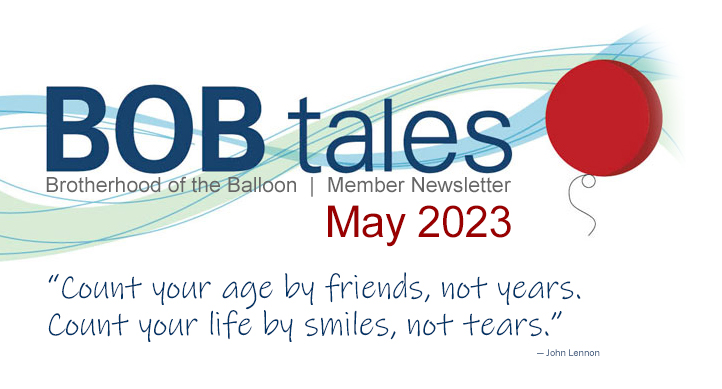
Dear Members (a note from Bob Marckini):
Well, it finally happened, and I couldn’t do a darn thing about it. I turned 80!
Where does time go? It seems like just yesterday I graduated from college and a few months later proposed to “the girl of my dreams.” But that was almost 60 years ago! It also seems like just yesterday both our daughters were born. I won’t tell you how long ago that was, because then you’d know Deb’s age, and I don’t want to incur her wrath.
Twenty-three years ago, I was diagnosed with prostate cancer and began my exhaustive search for a treatment option. My criteria back then were simple: 1) anything but surgery, and 2) minimal side effects. We all know how that turned out.
With my birthday approaching, I told my family, “Even though this is a big one, I don’t want a party; I don’t want a video with clips from friends and family – that’s a big hassle for all involved; and finally, no presents – I have everything I need.”
I told them what would make me happiest would be to get together with our immediate family for lunch or dinner and to get a few birthday cards. I had all the bases covered …
I thought.
When we got together at our home for an early dinner, my daughter, Susie, had come the day before and stayed overnight. Deb, Mark, Gemma and their goldendoodle, Lucy, arrived a few hours before the small celebration. When I went out to greet them, Mark asked if I’d help him carry a couple of boxes. “They’re large and heavy,” he said.
I told them I didn’t want any gifts, I thought. What have they done?
We all got settled in the house, had some cheese and crackers, and I showed them the dozen or so cards I’d received. Then they brought me over to the boxes and invited me to open one of them.
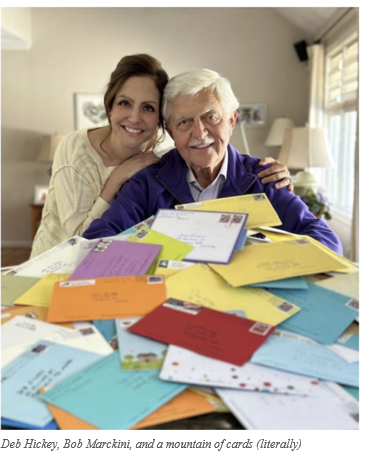 Cards, cards, and cards. I think there were more birthday cards in those boxes than in all the Walgreens and CVSs in New England. I soon learned that Deb sent a note to our members letting them know it was my 80th birthday and suggested they might want to send a card. She asked them to mail it to her house, so she could compile them and surprise me on my birthday. Well, surprised I was. There were literally hundreds and hundreds of birthday cards.
Cards, cards, and cards. I think there were more birthday cards in those boxes than in all the Walgreens and CVSs in New England. I soon learned that Deb sent a note to our members letting them know it was my 80th birthday and suggested they might want to send a card. She asked them to mail it to her house, so she could compile them and surprise me on my birthday. Well, surprised I was. There were literally hundreds and hundreds of birthday cards.
“Open them!” Someone said excitedly. “Sure,” I replied. “But it will take a month.” That, I later learned, was an understatement. We sat down to dinner, thanked God for our many blessings, and quietly celebrated my birthday.
Later, I began opening the cards. Most were from the U.S., but many were from Canada, Australia, and different parts of Europe. And there was much more in those boxes than cards; each one had been carefully selected and had a beautiful sentiment. Every card had a handwritten message, and more than half included typed messages, some two or more pages long. Wow! A couple in the first batch were from patients Deb had helped, and they thanked me for the help that came from both of us.
I managed to open only about 30 that day, because it was important to me to read each one and share it with my family. The messages were all from the heart. There were notes and letters from people I’d counseled over the years – some by email, some over the phone. Several members reminded me that we conversed multiple times over many days or weeks.
I’ve since opened about 75 more cards. Here’s an excerpt from one:
If anyone should be added to the pantheon of proton saints, you should be – right up there beside Dr. Slater! I can't think of anyone who’s worked more tirelessly for the cause than you! In the past 16 years, my respect, admiration, and love for you just keeps growing. It’s my pleasure and privilege to call you my friend.
And another:
I had aggressive prostate cancer, Gleason 9. I did exhaustive research, contacted you, Bob, asked lots of questions, and chose protons at Loma Linda. Nineteen years later (I’m 82) I’m doing just fine. I want to thank you for being there for me. You and your daughter Deb provide a perfect support group and I couldn’t ask for more.
And one more:
You did it Bob!!! Proton therapy was the gift you brought to so many. Maybe that’s why I’ll soon be 90 (Oct).
One member notified me in his card that he made a $50,000 gift to the Robert J. Marckini Chair for Proton Therapy Research. How’s that for a birthday gift?!
My plan is to open 20 or 30 cards a day, so it may take two or three months to get through them all. In future BOB Tales, I may share more of the comments and feedback I received in these cards and letters. So many of them report on health, healing, and hope – things we all need to hear more of during these challenging times.
From the bottom of my heart, I sincerely thank all who took the time to send a card or letter. I can’t tell you how much it means to me and my family. And, incidentally, they’re still coming in.
------------------
This month’s newsletter comes with considerable information on a variety of subjects: Researchers have discovered a new weapon to kill prostate cancer that’s otherwise resistant to conventional treatment technologies. If you’re newly diagnosed and considering active surveillance, you’ll want to read about a new British study that sheds much light on this option. In another article, we’ll tell you about a major insurance company that lost a proton therapy class action lawsuit, and must pay millions to proton patients, as well as revising its coverage policy.
“Ditch the dairy” is the message from a new study that suggests certain compounds in dairy products could result in a 34 percent higher risk for prostate cancer and an increased risk for other cancers as well. And you’ve heard it here before: Another study confirms a dietary change that can reduce prostate cancer disease progression and/or recurrence by 52 percent.
Once again, scientific studies document the value of exercise. This month we report on several large studies that clearly confirm the benefits of exercise in slowing the progression of prostate cancer. And another study shows the impact of regular exercise on improving sleep.
We’re pleased to include a section written by Jennifer Maggiore, executive director of the National Association for Proton Therapy, on Medicare Advantage plans and why they may not offer any “advantage” whatsoever to patients. In fact, a report from the Office of the Inspector General of the U.S. Department of Health and Human Services, showed these plans “often delay, or outright deny, beneficiary access to services that would normally meet Medicare coverage requirements.”
This month we reprint the final segment from my book on the “Personal Side” of proton treatment, including a pretty funny incident that happened on the golf course 23 years ago. We also have some valuable health tips, another great brain teaser, and an inspirational story about a bagpiper with a big heart.
As always, we appreciate feedback and welcome any suggestions you have on how to improve the value of the BOB Tales to our members. Just send an email to [email protected].
Bob Marckini
To print the BOB Tales newsletter or view the newsletter with a larger font size, click here for the PDF file.
.jpg)
In This Issue:
- ‘Whole New Weapon’ Kills Treatment-Resistant Prostate Cancer
- Dairy Products Linked to Increased Risk of Breast, Ovarian, and Prostate Cancers
- Plant-based Diets Linked to Lower Risk of Prostate Cancer Progression and Recurrence
- Fight Prostate Cancer by Exercising
- Medicare Advantage: Is There Really an Advantage?
- Prostate Cancer Related Health Tips
- Blueberries for Improved Brain Function and Cardiovascular Health
- Tips from a Centenarian on How to Live a Long, Healthful Life
- Bad Sleeper? Exercise!
'Whole New Weapon' Kills Treatment-Resistant Prostate Cancer
Scientists have uncovered a new way to kill prostate cancer that has not responded to treatment. They’ve found that targeting a single enzyme – called PI5P4Kα – can kill treatment-resistant prostate cancer.
“This is the first time this enzyme has been implicated in prostate cancer, and we expect that it will prove relevant to other cancers as well. An important element of improving precision medicine is using as many tools as possible to treat cancer while mitigating the risk of resistance,” said Brooke Emerling, Ph.D., co-senior author, associate professor at Sanford Burnham Prebys.
Most cases of prostate cancer can be treated with therapies that lower testosterone and other male sex hormones, but about 10 to 20 percent of cases become unresponsive to treatment. This treatment-resistant prostate cancer can then spread to other parts of the body and become deadly.
Male sex hormones – called androgens – promote the growth of both normal and cancerous prostate cells by binding to and activating the androgen receptor, a protein that’s expressed in prostate cells. This process causes the androgen receptor to then increase the expression of specific genes that cause
prostate cells to grow. Prostate cancer hijacks this process, which is why treatments that disrupt these pathways are effective.
“What's remarkable is that we've found an enzyme that can be targeted against prostate cancer even in cases where treatments that lower hormones are ineffective or where resistance has developed,” said Emerling. “This could give us a whole new weapon against prostate cancer and other cancers that rely on this enzyme.”
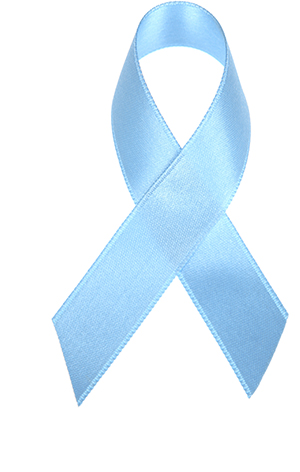 Emerling and her colleagues were initially interested in doing this study after finding that patients with treatment-resistant prostate cancer had high levels of PI5P4Kα. They concluded that this protein must play a role in the cancer’s ability to resist treatment. The team was then able to illustrate – using multiple prostate cancer model systems – that inhibiting this enzyme could kill treatment-resistant prostate cancer.
Emerling and her colleagues were initially interested in doing this study after finding that patients with treatment-resistant prostate cancer had high levels of PI5P4Kα. They concluded that this protein must play a role in the cancer’s ability to resist treatment. The team was then able to illustrate – using multiple prostate cancer model systems – that inhibiting this enzyme could kill treatment-resistant prostate cancer.
The findings, published recently in the journal, Science Advances, could help address the growing threat of treatment resistance in prostate cancer. They could also lead to improved treatments for other cancers, such as those affecting the breast, skin, and pancreas.
Dairy Products Linked to Increased Risk of Breast, Ovarian, and Prostate Cancers
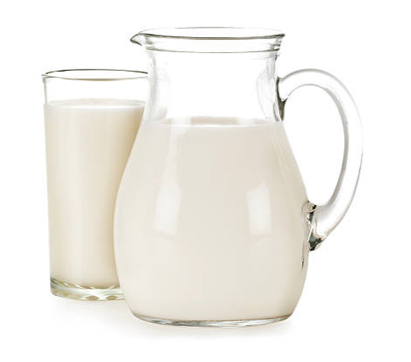 According to a new narrative review by the Physicians Committee for Responsible Medicine, hormones and compounds in dairy products may play a role in increasing the risk of breast, ovarian,
According to a new narrative review by the Physicians Committee for Responsible Medicine, hormones and compounds in dairy products may play a role in increasing the risk of breast, ovarian,
and prostate cancers. Consuming dairy products can lead to excess levels of estrogens and insulin-like growth factor-1 (IGF-1), hormones that naturally occur in cow’s milk. This can interfere with the body’s own levels and promote hormone-related cancers.
Prostate Cancer
The review cites several large studies that show dairy consumption increases the risk of prostate cancer. For example, the Physicians’ Health Study, which tracked 21,660 men for 28 years, found those who consumed more than 2.5 servings of dairy per day had a 34 percent higher risk of developing prostate cancer compared with men who consumed half a serving or less. The consumption of whole milk was associated with risk of progression to fatal disease after diagnosis.
Breast Cancer
The review also cites a 2020 study, which followed 52,795 pre- and postmenopausal women for about eight years. Higher intakes of cow’s milk were associated with a 50 percent increase in breast cancer risk. Full-fat and reduced-fat milk produced similar results.
Ovarian Cancer
Lactose in cow’s milk breaks down into galactose, a sugar lactose, which may interfere with a hormone that regulates ovarian function. This can eventually lead to ovarian cancer. Estrogen and IGF-1 may also play a role in ovarian cancer risk.
The review cites the Swedish Mammography Cohort, which included 61,084 women aged 38-76 years who were followed for an average 13.5 years. Women who consumed two or more glasses of milk per day were twice as likely to develop serious ovarian cancer, compared with women who never or rarely drank milk.
“Ditch the dairy to avoid the naturally occurring hormones and compounds in cow’s milk that can increase the risk of breast, ovarian, and prostate cancers,” says Anna Herby, DHSc, RD, CDCES, a co-author of the review and the nutrition education program manager for the Physicians Committee for Responsible Medicine. “Calcium, protein, and other nutrients can be obtained through healthful plant sources containing antioxidants that actually reduce your cancer risk.”
Plant-based Diets Linked to Lower Risk of Prostate Cancer Progression and Recurrence
Decades of observational studies have found that tomatoes – which contain the antioxidant lycopene – appear to reduce prostate cancer incidence and mortality. However, because less was known about the effects of plant-based dietary patterns and prostate cancer survivorship, the CaPSURE Diet and Lifestyle (CDL) study was started in 2004.
Participant Info
 Median age: 72 years
Median age: 72 years
Race: 95% white
Median PSA: 5.6
Gleason score: 68% <7, 26%=7, 6% >7
Cancer stage: 58% T1, 42% T2
Treatment: 63% surgery, 6% active surveillance, 22% radiation therapy, 5% hormone therapy, 4% other
Over the course of 7.4 years, study participants completed questionnaires detailing their quantity and frequency of about 140 foods and beverages. Their food choices were scored based on a composite sum of positive or negative values assigned to plant-based or animal food groups.
The investigators adjusted for time since diagnosis until the first questionnaire was given, as well as age, body make-up, year diagnosed, race, exercise patterns, health history, cancer stage, primary treatment, and many other variables.
Key Findings
Of the 2,038 participants, 204 experienced disease progression. Those who consumed the most plant-based foods had a 52 percent lower risk of disease progression compared with the group of patients with diets that included the lowest amount. Further, the risk of recurrence was 53 percent lower in the highest versus lowest plant consumption groups.
“The risk of disease progression is one of many pivotal concerns for people with prostate cancer, as well as their family, caregivers, and physicians. These findings may directly inform clinical care, such as providing diet recommendations for managing health, and potentially offer other positive health benefits for preventing numerous chronic diseases,” said Bradley Alexander McGregor, MD, ASCO expert in genitourinary cancers.
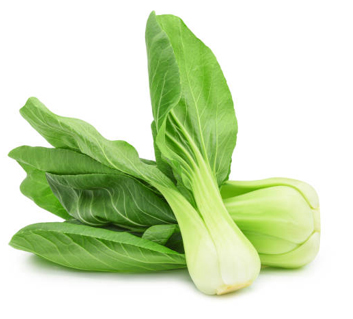 Next Steps
Next Steps
Next steps will involve assessing the potential relationship between plant-based diets and prostate cancer–specific mortality. The study’s investigators also plan to analyze the relationship between plant-based dietary measures and prostate cancer–specific quality of life at two, five, and 10 years after diagnosis.
Fight Prostate Cancer by Exercising
Research has shown that exercise can extend life, improve the quality of life, and slow the progression of certain cancers. In fact, the results of several large studies suggest that exercise reduces the risk of prostate cancer mortality by 30 percent. UCSF epidemiologist and pioneer in studying the benefits of exercise in prostate cancer, June Chan, Sc.D., found a lower risk of prostate cancer progression in men who engaged in vigorous exercise. In later studies she saw benefits by just brisk walking.
Exercise lowers insulin and a closely related hormone, called insulin-like growth factor. These hormones affect cell growth and division. If your insulin levels are high because you don’t eat a healthful diet, you’re overweight, and/or you live a sedentary lifestyle, you could be at risk for the development of diabetes, heart disease, or even cancer. Prostate cancer is particularly sensitive to these hormones.
Canadian researchers observed the effects of 12 weeks of high-intensity interval training on prostate cancer patients at the early end of the spectrum – patients on active surveillance with low-grade disease. They found that aerobic exercise decreased PSA levels and slowed PSA velocity. These patients also showed improvement in cardiorespiratory fitness. Men with prostate cancer should be concerned about their cardiovascular health because cardiovascular disease is a major cause of illness and death for patients with prostate cancer, according to Harvard epidemiologist Lorelei Mucci, Sc.D.

This special segment was contributed by Jennifer Maggiore, Executive Director at
the National Association for Proton Therapy (NAPT).
Medicare Advantage: Is There Really an Advantage?
A Medicare Advantage Plan (also called “Part C” or “MA”) is a Medicare-approved health plan offered by a private insurance company that contracts with Medicare. The plans include Part A, Part B, and usually Part D, as well as other benefits.
MA Plans have become increasingly popular among seniors. About 45 percent of those eligible for Medicare are enrolled in an MA plan with an expected enrollment of 60 percent in the next five years.
MA plans require authorization for certain diagnostic and treatment services and drugs. Unfortunately, the prior authorization process is creating significant delays and denials of care for patients seeking proton therapy and other advanced cancer treatments. As more and more patients are enrolled in these plans, the delays and denials will become an even greater problem.
Recently, the Office of Inspector General of the U.S. Department of Health and Human Services (HHS) released a report that showed these plans often delay, or outright deny, beneficiary access to services that would normally meet Medicare coverage requirements. The 2022 NAPT annual member survey found that MA plans denied 27 percent of prior authorization requests for proton therapy which would have otherwise been approved by traditional Medicare. This is more than double the rate of 13 percent reported in the OIG report.
In addition, more than half of proton centers report committing over 60 full-time equivalent hours per week on the prior authorization process. Time spent on prior authorizations also disrupts the patient-physician relationship, which should be focused on personalized, patient-centered care. Unfortunately, physicians and staff have less time to care for patients and instead are required to fulfill requests for duplicate documentation or participate in peer-to-peer reviews with non-specialists who far too often are under resourced and not able to perform an appropriate level of review. More important, the prior authorization process increases distress for cancer patients when they’re concerned about their health, finances, and future wellness.
While the denials may be ultimately overturned, there’s an impact on a patient’s mental wellbeing and risks associated with delaying care. Research demonstrates a 1.2 - 3.2 percent increased risk of death with each week of delay in starting cancer treatment. All of these experiences and evidence serve to further reinforce that MA plans use of prior authorization policies unnecessarily delay and deny care to Medicare beneficiaries.
NAPT has been working to address this issue and protect patient access to proton therapy for Medicare beneficiaries. We’ve submitted comments to the Centers for Medicare Services (CMS) advocating that these plans do not establish guidelines stricter than Medicare statutes and regulations, ensure reviewers are trained in the specialty of care they are authorizing, and create policies that streamline the authorization process.
NAPT has joined the Regulatory Relief Coalition with over 500 stakeholders to support the Seniors Timely Access to Care Act to prevention disruption in care and increase transparency of the prior authorization process. I was recently in Washington, D.C. meeting with congressional offices to explain the value of proton therapy and highlight our concern over barriers to patient access such as the burdensome prior authorization process. Members of Congress are listening to the concerns of their constituents. The media are also highlighting the concerns of commercial insurance prior authorization processes. As the voice of proton therapy, we will continue to advocate for increased access to proton therapy by reducing commercial insurance barriers.

We’ve been producing BOB Tales newsletters for more than 20 years. During this time there have been articles that many new members haven’t seen, and some longer-term members may have forgotten. So, we periodically re-run articles from past newsletters. The following is from May 2007.
Note: [email protected] was the source of the information provided in this article. RealAge.com, a leading consumer Health media company, was subsequently acquired by Hearst Magazine.
Prostate Cancer Related Health Tips
Olive Oil Benefits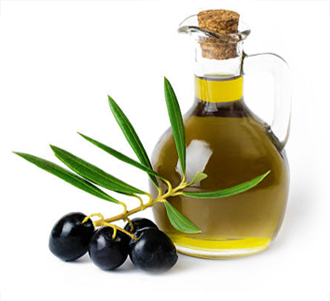
Starting an olive oil habit could be as healthful as kicking a smoking habit. And the proof is in your urine. Microscopic substances in your urine reveal how well your body is defending against everyday cancer-causing cell damage. Think of the substances as shrapnel – too much means your body is taking some serious hits. Enter olive oil. In a study, men who increased their intake had less of the damage-signaling shrapnel in their urine samples. How much less? The drop was similar to what smokers experience when they quit. Now that's some potent oil.
The Power of Blueberries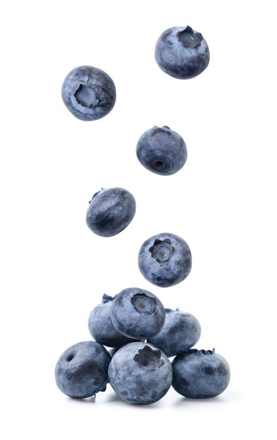
You don't have to pour red wine on your Cheerios to get the heart-healthy goodness of resveratrol in the morning. Bring blueberries to your breakfast table instead. Blueberries are rich in the same potent anticancer and heart-protective resveratrol compound found in abundance in red wine. Blueberries and other berries of the same species are known for their antioxidant prowess, thanks to the fact that they’re brimming with phenols. Some of the phenol compounds recently identified in different blueberry species include not only resveratrol but also piceatannol, a cancer-fighting phenol, and pterostilbene, a phenol credited with helping control blood sugar. Blueberries are loaded with fiber as well. The latest research on blueberries suggests that the combination of health-promoting substances found in blueberries may work synergistically to dramatically slash disease risk. That's probably why studies link the berries to better brain function, lower cancer risk, and possibly even improved stroke outcomes.
Tomatoes May Do More Than Help Your Prostate
 You’ve heard of ditching salt to help lower your blood pressure. But what about bumping up your tomato intake? People with hypertension who consumed tomato extract daily for eight weeks experienced a 10-point drop in systolic blood pressure and a four-point drop in diastolic pressure. Researchers credit the lycopene in tomato extract for the potential blood-pressure-lowering effects experienced by participants in a recent study, but further research is needed to confirm the findings. And it's not clear how eating whole tomatoes would compare to taking tomato extract. In the study, people took 250 milligrams of commercial tomato extract daily – containing about 15 milligrams of lycopene. That would be equivalent to the lycopene in about 3 or 4 tablespoons of tomato paste. This wouldn't be a difficult amount to add to your daily diet. Regardless of the blood pressure benefits, we already know that lycopene has anticancer and heart-protective effects. Not a fan of tomatoes? You have other options for getting your lycopene fix, including watermelon, red grapefruit, and canned baked beans.
You’ve heard of ditching salt to help lower your blood pressure. But what about bumping up your tomato intake? People with hypertension who consumed tomato extract daily for eight weeks experienced a 10-point drop in systolic blood pressure and a four-point drop in diastolic pressure. Researchers credit the lycopene in tomato extract for the potential blood-pressure-lowering effects experienced by participants in a recent study, but further research is needed to confirm the findings. And it's not clear how eating whole tomatoes would compare to taking tomato extract. In the study, people took 250 milligrams of commercial tomato extract daily – containing about 15 milligrams of lycopene. That would be equivalent to the lycopene in about 3 or 4 tablespoons of tomato paste. This wouldn't be a difficult amount to add to your daily diet. Regardless of the blood pressure benefits, we already know that lycopene has anticancer and heart-protective effects. Not a fan of tomatoes? You have other options for getting your lycopene fix, including watermelon, red grapefruit, and canned baked beans.

BOB Member Pens Second Book on Prostate Cancer/Proton Therapy Journey
Ron Nelson was treated with proton therapy in 2011 at the University of Florida (UFHPTI) proton center. He’s an incredibly bright guy; fun to be around; and a good friend to all who know him. Bob and Deb have interacted with Ron many times over the years at conferences, workshops, and most recently as members of the COMPPARE clinical trial team.
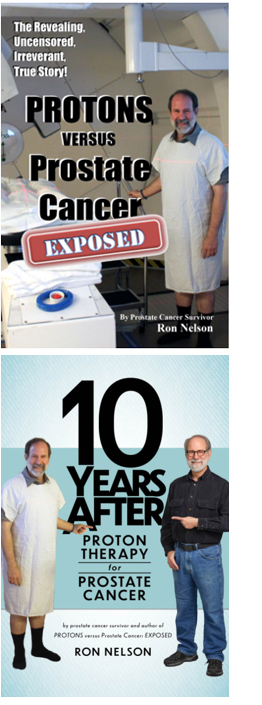 Eleven years ago, Ron published his first book, Protons Versus Prostate Cancer Exposed – The Revealing, Uncensored, Irreverent, True Story! And recently, he completed his second book, 10 Years After Proton Therapy for Prostate Cancer.
Eleven years ago, Ron published his first book, Protons Versus Prostate Cancer Exposed – The Revealing, Uncensored, Irreverent, True Story! And recently, he completed his second book, 10 Years After Proton Therapy for Prostate Cancer.
Both books focus on the experiential aspects of the patient’s journey through prostate cancer and proton therapy rather than the technical or scientific perspective. The books reveal and explore what goes on inside the mind of the patient throughout his experience. Ron’s first book is authored by a self-proclaimed “newbie.” The second is from the viewpoint of a seasoned patient, a decade later.
The main question Ron addresses in his first book is, “What’s it like to have proton therapy?” It details his original experience before, during, and immediately after proton therapy.
In the first book, Ron explains what it’s like to receive proton beam radiation therapy for prostate cancer. It includes step-by-step detail from the patient’s point of view in non-technical language with just enough humor to soften a serious subject. The first book will help those considering proton therapy decide whether this often-misunderstood treatment is the right approach for them. It will also serve as a helpful guide for those who’ve already chosen this treatment option. While some of the specifics have changed since Ron was treated, most of the process remains the same, and newbies continue to use his first book as a roadmap for what to expect, as they find reassurance in his words.
Since Ron’s first book was published, patients have frequently asked him, “After all these years, Ron, how are you doing?” His candid, detailed answers are in his second book, along with a special section for proton ambassadors and other supplemental material.
In his second book, Ron is no longer a newbie – he’s a 10-year survivor – and he offers insight and comfort to newbies, survivors, and fellow ambassadors. In his easy-to-read conversational style, Ron holds back nothing in answering the questions he’s most often asked:
- Are you completely cured?
- Do you have any side effects?
- Do you fear a recurrence?
- With 20/20 hindsight, what have you learned?
- If you could go back in time, would you choose proton treatment?
- How should a newbie decide what to do?
- What are the risks?
- What are the common mistakes?
In great detail, Ron answers all these questions, defines “The Newbie Trap,” and provides a nine-step “Newbie-Do” list to guide you to the finish line. There’s also a special section specifically for proton ambassadors, and reprints of a few of his favorite articles from his blog, The After Proton Blog.
Both of Ron’s books are available on Amazon.

Recently Treated BOB Member Interviewed in Local Paper
Bill Willitts recently finished his proton treatment at Loma Linda University Cancer Center. He and Deb have been in touch several times during and after his treatment. Bill, whose family owns a one-of-a-kind resort and spa in Sisters, OR – the FivePine Lodge – has shared with Deb his interest in forming a hands-on wellness retreat to educate and support improved anticancer/heart healthy nutrition, exercise and mindfulness.
“My prayer is that my business background, my wife’s degree in the healing arts, our campus, and our alliances with the Oregon medical community could provide a life changing experience The goal would be to deliver practical evidence-based information and practice, support personalized reinvention, and create lasting fellowship,” said Bill.
In the meantime, Bill’s committed to spreading the word and educating others about proton therapy for prostate cancer. In fact, he just shared his story with his local newspaper, The Nugget, in an article titled, “Sisters Man Lauds Proton Therapy.”
When Bill was diagnosed with prostate cancer, his urologist recommended surgery, the “gold standard” treatment. Concerned about side effects, Bill decided to do his own research into alternative methods of treatment which led him to proton therapy. In The Nugget article, he shares his treatment experience, his outcome, and his advice for other men who are diagnosed with prostate cancer.

The Robert J. Marckini Chair for Proton Therapy Research
Ten years ago, Loma Linda University Health (LLUH) honored Bob Marckini by establishing an endowed chair in his name. When chairs are “endowed,” funds are raised and invested in order to generate annual income from which salaries and expenses for research are allocated. At LLUH, the target for an endowed chair is $5 million. This is the level that can provide funding to support a research scientist and assistant along with expenses connected with the research effort, including travel, equipment and supplies.
Endowments are far more desirable than grants, because with grants, researchers must spend up to 60 percent of their time working on writing grants, leaving only about 40 percent of their time to do research. Endowments free up the researcher to do research and the benefits to patients are far greater. According to Dr. Jerry Slater at Loma Linda University Cancer Center, with endowments, the research team is at the wheel and they have much more control of the scope, direction and pace of the research.
Thanks to contributions from our members, the Marckini Endowed Chair is more than $4.5 million and is actively being used to fund important proton therapy basic and clinical research. You can help by making a contribution – just follow the instructions below under “Giving Options.”
Many members have designated a portion of their estate plan to go to the Marckini Chair after their passing. You can also make gifts of assets, such as appreciated stock, land or other assets.
We feel that one of the best ways of saying “thank you” for the gift of proton therapy that we’ve received is to give back.

Giving Options
Online
From the pull-down menu, choose where you'd like to direct your gift — 1) Proton Research through the James M. Slater Chair, 2) Proton Research through the Robert J. Marckini Chair, or 3) choose "Other" and specify where you'd like your gift directed in the space provided.
By Check
- Make your check out to "LLUCC."
- Specify where you'd like to direct your gift in the memo line — 1) Slater Chair, 2) Marckini Chair, 3) Theranostics, or 4) write "Unrestricted" so LLUH can use it where it's needed most.
- Mail your check to: LLUH, Office of Philanthropy P.O. Box 2000, Loma Linda, CA 92354.
By Phone
- Call Regina Joseph at 909-558-5010.
Blueberries for Improved Brain Function and Cardiovascular Health
Here’s another story on the benefits of blueberries. New research has found that eating a handful of wild blueberries every day could lower blood pressure and improve memory and brain cognition. The study, published in The American Journal of Clinical Nutrition, involved a randomized, double blind, placebo-controlled trial of 61 healthy men and women aged 65 to 80, who drank a beverage made with 26 grams of freeze-dried wild blueberry powder while the control group drank a placebo.
Over 12 weeks, researchers found those who drank the berry powder had improved memory and accuracy on attention tasks, as well as lower blood pressure. During the same time period, the blood pressure of those in the test group was lower when compared to those in the placebo group, in addition to having an increased flow mediated dilation (FMD), which leads to a lower risk of cardiovascular disease.
“We know from previous research that there are potential advantages from consuming blueberries, but this study went further by exploring how a daily and dietary achievable measure of blueberries could benefit our cognitive and cardiovascular health simultaneously in a healthy older population,” said Dr. Ana Rodriguez-Mateos, Reader in Nutrition at the Department of Nutritional Sciences.
Tips from a Centenarian on How to Live a Long, Healthful Life
Cleveland Clinic’s Dr. Howard Tucker is the world’s oldest practicing doctor, according to Guinness World Records. At 100 years old, the neurologist has been working in medicine for 75 years.
Besides surviving the pandemic, Tucker has lived through the Great Depression and World War II. And luckily, he hasn’t dealt with any major diseases, but he did break his neck skiing in his late 80s.
Tucker credits heredity and family history of longevity with giving him a good start, but he says these things “must be supported by moderation of nutrition, alcohol, and happiness.” Tucker has never smoked; he drinks alcohol only socially; and when it comes to food, he enjoys everything in moderation.
The centenarian has exercised most of his life. He swims and jogs regularly. He’d like to ski, but his family prohibits him from doing so, so Tucker’s taken up snowshoeing. He also works out in his home gym on a treadmill, stationary bike and “an old fashioned NordicTrack, which is like skiing.”
Tucker’s Top Three Tips
- Don’t retire! Although Tucker realizes there are certain jobs older people just can’t do anymore, he suggests that retiring is a poor choice – at least for him. In fact, he calls retirement “the enemy of longevity.”
- Keep learning! Tucker received his medical degree in 1947. He saw doctors retire because they didn’t want to learn how to use a computer. Although Tucker found new technology challenging, he was determined to keep up with it. He credits his grandson for helping him. Tucker is also a lawyer, although he doesn’t practice. He passed the Ohio Bar Exam at age 67 because he was interested in law.
- Cultivate happiness! Tucker strongly believes you should love what you do for work as well as being happy in your domestic life. He and his wife have been married for 65 years. They have four children and 10 grandchildren.
Bad Sleeper? Exercise!
About 30 percent of adults struggle with short-term sleep disorder and about 10 percent experience long-term issues. Those who sleep too little or too much may put them at risk for medical issues including heart disease, obesity, cognitive decline, and early death. But according to Chinese researchers, exercise may help offset those effects.
A new study of 92,000 adults ages 40 to 73 found that those who were less physically active and slept less were 2.5 times more likely to die over seven years (earlier?). But the risk nearly disappeared for the bad sleepers who engaged in moderate to vigorous exercise for at least 25 minutes every day.
According to researchers, this study is unique because it used motion-tracking sensors to quantify sleep and physical activity. Other studies have primarily depended on self-report questionnaires, which could include false information and mistakes.
“Exercise fights inflammatory and metabolic dysregulations and abnormal sympathetic nervous system activity,” said study author Jihui Zhang, PhD, of the Affiliated Brain Hospital of Guangzhou in China. Those problems are associated with cardiovascular diseases and other potentially fatal conditions.
But what if you don’t get enough sleep and therefore, you’re too tired to exercise? According to Zhang, exercise and sleep have “a robust directional relationship.” Exercise helps with sleep, while better sleep helps provide the energy to exercise. And, according to one of the study’s researchers, combining aerobic and muscle-strengthening exercises provides the largest benefits to health.

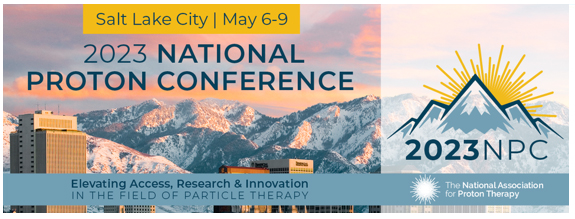
The National Association for Proton Therapy (NAPT) is a nonprofit organization founded to educate and increase public awareness about the clinical benefits of proton beam therapy. Founded in 1990, NAPT advocates to ensure patient choice and access to affordable proton therapy and to encourage cooperative research and innovation to advance the appropriate and cost-effective use of proton therapy.
Each Spring, NAPT holds the National Proton Conference (NPC). The event brings together leaders in the field of particle therapy with a robust agenda focused on emerging clinical research, operational efficiencies, and insurance authorizations.
Deb Hickey plans to attend NPC 2023 – “Elevating Access, Research, and Innovation in the Field of Particle Therapy” – in Salt Lake City, UT, May 6-9.

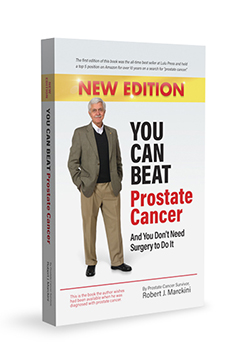 You Can Beat Prostate Cancer: And You Don’t Need Surgery to Do It – Second Edition
You Can Beat Prostate Cancer: And You Don’t Need Surgery to Do It – Second Edition
210 Amazon Reviews
As of this writing, there are 210 reviews on Amazon, almost all five-star, and the book is in the No. 2 position on a general search
for “prostate cancer” in the books category.
Following is an excerpt from a recent review of the audio version of the book.

Hope for Survival from Prostate Cancer
I listened to Robert Marckini share his amazing experience and research on prostate cancer in his audio book, You Can Beat Prostate Cancer. He shares his considerable research on the effectiveness of many prostate cancer procedures and discusses them in understandable detail. His research also includes discussions with many men who’ve undergone proton therapy and scientific research into the details of that procedure as well as other procedures. Robert’s book also includes nearly 40 pages of testimonials from prostate cancer survivors who’ve chosen proton therapy.
I highly recommend this book to every man concerned about prostate cancer and to every practicing physician.

The Personal Side
Last month we continued with our series of excerpts from Chapter 9 of Bob’s latest book, switching from the technical stuff to the personal side of Bob’s experience of treatment, looking back on the events of 22 years ago. In previous BOB Tales we reported on Bob and Pauline’s arrival in Southern California; events leading up to the start of treatment; his relief on learning that his treatment was truly painless and uneventful; his realization that he made the right treatment decision; his daily routine; his proton technology education process; and the important of proper nutrition while in treatment; the value
of maintaining emotional fitness and the importance of the Wednesday night meetings.
This month we’ll finish up by telling you an amusing story. Anyone who’s been through radiation to the prostate knows that some slight urinary burning and increased urgency to urinate is a common, short-term side effect. Bob was no exception. Following is the remainder of the chapter in this series on “The Personal Side” of treatment.
One Short-Term Side Effect
About six weeks into treatment, I began to experience some slight urinary burning and increased urgency to urinate. At night I found myself having to make three-or-four trips to the bathroom. During the day it was worse. At times I couldn’t go much more than 20-30 minutes before having to visit the restroom.
That wasn’t so bad, but things got a little more complicated when I was playing golf one day about seven weeks into treatment.
Really Strange Golfer
I went to Oak Valley Golf Club in Beaumont by myself that day and was matched up with three women. There were only two restrooms on the course, and I knew I was going to get into trouble as the urinary urgency was just about at its peak, with relief stops needed about every 20 minutes. Fortunately, the golf course was mature and heavily wooded.
At first, I managed my relief by lagging behind after finishing a hole, pretending I left a club or golf glove on the previous green. Then I would sneak into the bushes as the other three walked ahead. As the match progressed and we became friends, the three of them began to wait for me out of courtesy, denying me my much-needed comfort break.
I was a high handicap golfer, so I often hit my fair share of balls to landing areas other than the fairway. But never had I intentionally directed balls into the woods – until that day. At least once on every hole I would wind up and crack one deep into the brush or over a hill behind a sand trap, and then gingerly trot after it to get my blessed relief.
My golf partners must have thought it a bit odd when I frequently lined up about 45 degrees from the direction of the green and swatted one deep into the woods. I suspect they talk about that “crazy guy” to this day
Things were a little easier off the golf course, but I did realize that my fellow prostate cancer radiation patients and I had one thing in common: We knew exactly where every public restroom was located in San Bernardino County. At one Wednesday night meeting, one of the patients produced a map of the community with every public restroom identified within a 5-square-mile radius of the hospital. The audience laughed uncontrollably – and then they all requested copies.
The urinary urgency and slight burning issues were short lived. My doctor prescribed Pyridium Plus, a drug used to treat urinary tract irritation. This took care of the problem until it disappeared on its own a few weeks after treatment ended. This medication has an interesting side effect – it turns your urine to a bright, day-glow red color. Not a problem unless you are at a urinal and someone catches sight of your fluorescent discharge. This earned me a few strange looks in public restrooms.

Was Bob's book helpful to you?
If Bob’s book was helpful to you and you’d like to help others find it on Amazon, please write a review. Book reviews help boost the book’s visibility within Amazon’s search results for users looking for information on prostate cancer treatments and/or proton therapy.
Proceeds from book sales are used to help fund our efforts and to support proton therapy research.


Last Month’s Brain Teaser
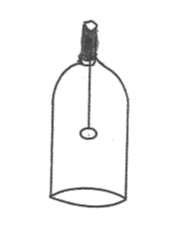 A man is shown a button suspended by a string inside a corked bottle. It is hanging securely from the cork partway down the bottle. How does he manage to cause the button to drop to the bottom of the bottle without moving the cork in or out of the bottle and without breaking the bottle?
A man is shown a button suspended by a string inside a corked bottle. It is hanging securely from the cork partway down the bottle. How does he manage to cause the button to drop to the bottom of the bottle without moving the cork in or out of the bottle and without breaking the bottle?
Answer: The man uses a magnifying glass to focus the sun’s rays on the string until it burns through. The button then drops. (Note: This works; we tried it)
Winner: The winner is from Ft. Lauderdale, FL and wishes to remain anonymous.

New Brain Teaser
A man puts his bare hand into a pan of boiling water but doesn’t get burned. Why?
Send your brain teaser answer to [email protected] for a chance to win a signed copy of Bob Marckini’s NEW second edition book, You Can Beat Prostate Cancer.

Random Thoughts
- My wife didn’t order anything from Amazon last week, so the UPS guy knocked on our door to see if we were okay.
- My wife asked why I spoke so softly in the house. I said I was afraid Mark Zuckerberg was listening! She laughed. I laughed. Alexa laughed. Siri laughed.
- Once you understand why pizza is made round, packed in a square box, and eaten as a triangle, then you will understand women.
- Fuel prices are so high that I went to the car dealership and test drove three cars to run my errands.
- If you’re buying a watch from Amazon, be warned. I learned the hard way that if it says you can swim with it, this applies only if you knew how to swim before you bought it.
- My wife is blaming me for ruining her birthday. That’s ridiculous, I didn’t even know it was her birthday.

The Bagpiper
As a bagpiper, I play many gigs. Recently I was asked by a funeral director to play at a graveside service for a homeless man. He had no family or friends, so the service was to be at a pauper’s cemetery in the backcountry. As I was not familiar with the backwoods, I got lost and being a typical man, I didn’t stop for directions.
I finally arrived an hour late and saw the funeral guy had evidently gone and the hearse was nowhere in sight. There were only the diggers and crew left and they were eating lunch. I felt badly and apologized to the men for being late.
I went to the side of the grave and looked down and the vault lid was already in place. I didn’t know what else to do, so I started to play.
The workers put down their lunches and began to gather around. I played out my heart and soul for this man with no family and friends. I played like I’d never played before. And as I played “Amazing Grace,” the workers began to weep. They wept … I wept … We all wept together. When I finished, I packed up my bagpipes and started for my car. Though my head was hung low, my heart was full.
As I opened the door to my car, I heard one of the workers say, “I’ve never seen anything like that before, and I've been putting in septic tanks for 20 years.”
Apparently, I’m still lost. It’s a man thing.


Three Signs that Signal a Scam
All of us have had scam attempts perpetuated on us, and for many, quite successfully, unfortunately. After the scam has happened, the repairs can be very costly, complicated, and extremely time consuming. Some of these steps include notifying law enforcement, canceling all credit cards, closing bank accounts, notifying creditors, notifying credit agencies, etc. The fixes can take weeks, and sometimes months. It’s happened to members of our own family, and with our high volume of incoming emails, we see multiple attempts each day!
Bank of America recently sent out a warning listing the three most common signs of a scam attempt. We encourage you to study these, be aware of them and to share them with friends and family.
- You’re told to act immediately. Imposters want you to act before you have time to think and may pretend to be a relative in need, a utility company or even your bank.
- They ask for your personal information or codes. Never share codes or personal information when contacted unexpectedly by phone, text, email, computer alert or social media.
- You’re asked to pay in an unusual way. Be wary if asked to pay by wire transfer, gift card codes or payment apps.
Know the red flags! Learn more.
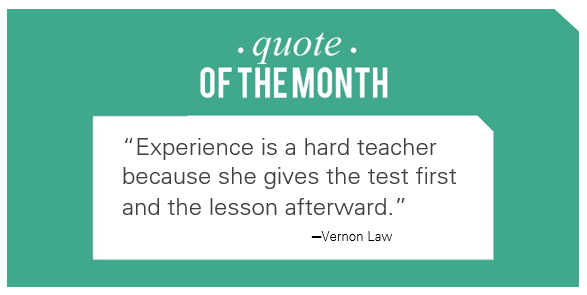

About 100 Years Ago... Source
What a difference a century makes! Here are some statistics from 1922 …
- The average life expectancy for men was 58.4 years.
- Fuel for cars was sold in drug stores primarily.
- Only 14 percent of homes had a bathtub. Only 8 percent of homes had a telephone.
- The maximum speed limit in most cities was 10 mph.
- The tallest structure in the world was the Eiffel Tower.
- The average U.S. wage was 22 cents per hour. The average U.S. worker made between $200 and $400 per year. An accountant could expect to earn $2,000 per year. A dentist earned about $2,500 per year. A mechanical engineer made about $5,000 per year.
- Sugar cost four cents a pound. Eggs were 14 cents a dozen. Coffee was 15 cents a pound.
- The five leading causes of death were pneumonia and influenza, tuberculosis, diarrhea, heart disease, and stroke.
- Marijuana, heroin, and morphine were available over the counter at local drugstores. Back then pharmacists said, “Heroin clears the complexion, gives buoyancy to the mind, regulates the stomach, bowels, and is a perfect guardian of health!” Shocking?
- Eighteen percent of households had at least one full-time servant or domestic help.
Low PSAs to all,
Bob Marckini and Deb Hickey
To print the BOB Tales newsletter or view the newsletter with a larger font size, click here for the PDF file.
NO MEDICAL ADVICE: Material appearing here represents opinions offered by non-medically-trained laypersons. Comments shown here should NEVER be interpreted as specific medical advice and must be used only as background information when consulting with a qualified medical professional.


